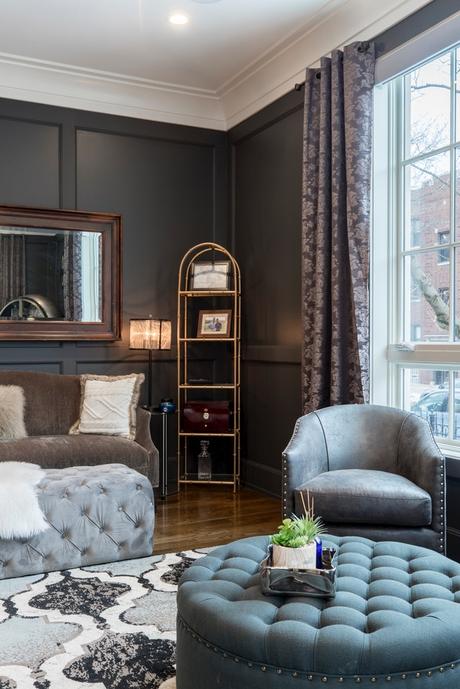Home decor goes beyond accents like furniture, wall hangings, and curtains. Those items are merely the finishing touch. You should start with paint to establish each room's aesthetic and feel.
Understanding The Role of Color Theory
Color theory forms the basis of how different shades work together (or contrast) with one another. It's important to understand how this theory works as you develop your home's palette, especially if you want to use a variety of different paints from room to room. The color wheel is arranged from light to dark. Complementary colors are across from each other on the color wheel. When you pair them, the effect is visually striking. Some examples of complementary colors are red and green (think Christmas) and yellow and purple. Don't overdo it on these pairings, however. The effect can be jarring. Instead, try painting one room a single color and use a softer version of its complement as a trim. Now the base color will really pop without becoming overwhelming.
Choosing Dark or Light
Dark paint needn't be somber. Rich colors like pine green or deep purple are both striking and mature. These heavier colors work best in areas such as the living room or dining room. Painting your dining room a darker color creates an elegant atmosphere. If you're not ready to go all-out with a deeper shade, use it in the powder room for the same effect on a smaller scale. When using darker tones in a larger room, try a glossy finish to soften it. Make sure that darker rooms are properly illuminated with lighting that appropriately matches the atmosphere. Making sure that the paint color looks excellent during the day and night is the key.

Standing Out
Bright, bold colors are definitely fun to play with. Make a statement about your creative side with red or orange paint. Very few people decorate with these colors, so your home will definitely be unique. Neutral decor is the way to go if you decide to use this kind of saturation with your interior painting. You don't want to take away from the visual heft on the walls. Using darker furniture can help add some contrast to brighter rooms as well.
Achieving Subtlety
Maybe you're someone who prefers to take the softer route when it comes to paint colors. Gray-toned blues and greens, creams or warm whites, and blushing pinks are excellent choices here. Subtle shades work particularly well in the bedroom because they create a soothing escape. They also reflect light well and make your space appear bigger. It is important to consider how you will be using a particular room when selecting paint. Is the area somewhere you plan on working? Or perhaps you want to create a relaxing environment for your children. Identifying the function of the room will help you choose the perfect paint colors.
Pick up some swatches before you pick up that paintbrush. It's a low-stakes method for figuring out what shades work with your layout. You might even surprise yourself with a new favorite color!
About the author:
Brooke Chaplan is a freelance writer and blogger. She lives and works out of her home in Los Lunas, New Mexico. She loves the outdoors and spends most of her time hiking, biking, and gardening. For more information, contact Brooke via Facebook at facebook.com/brooke.chaplan or Twitter @BrookeChaplan

